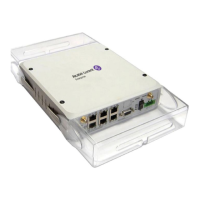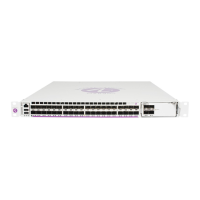SNMP Overview
Page 156 7705 SAR OS System Management Guide
The use of community strings provide minimal security and context checking for both
agents and managers that receive requests and initiate trap operations. A community string is
a text string that acts like a password to permit access to the agent on the 7705 SAR router.
The Alcatel-Lucent implementation of SNMP has defined three levels of community-named
access:
• read-only permission — grants only read access to objects in the MIB, except
security objects
• read-write permission — grants read and write access to all objects in the MIB,
except security objects
• read-write-all permission — grants read and write access to all objects in the MIB,
including security objects
User-Based Security Model Community Strings
User-based security model (USM) community strings associate a community string with an
SNMPv3 access group and its view. The access granted with a community string is restricted
to the scope of the configured group.
Views
Views control the access to a managed object. The total MIB of a 7705 SAR router can be
viewed as a hierarchical tree. When a view is created, either the entire tree or a portion of the
tree can be specified and made available to a user to manage the objects contained in the
subtree. Object identifiers (OIDs) uniquely identify managed objects. A view defines the
type of operations allowed, such as read, write, or notify.
OIDs are organized in a hierarchical tree with specific values assigned to different
organizations. A view defines a subset of the agent’s managed objects controlled by the
access rules associated with that view.
Predefined views are available that are particularly useful when configuring SNMPv1 and
SNMPv2c.
The Alcatel-Lucent SNMP agent associates SNMPv1 and SNMPv2c community strings
with an SNMPv3 view.

